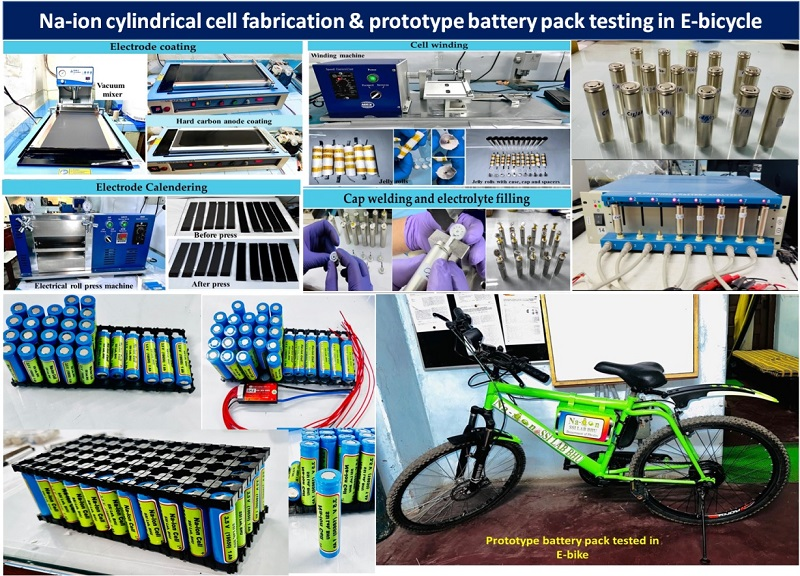In a significant development that could revolutionise the energy storage landscape, a team of researchers have synthesised cathode materials, capable of providing high capacity and prolonged battery life, enabling longer-lasting and more powerful sodium ion batteries. A prototype battery pack with cells using the cathode materials sodium nickel manganese cobalt oxide and sodium nickel manganese iron oxide (Na-NMC and NFM) have been tested in an E-bicycle.
Sodium ion batteries, which utilise sodium ions as charge carriers instead of lithium ions, offer numerous advantages over traditional lithium-ion batteries. Important among these advantages are lower costs, abundance and chemistry of sodium ion batteries similar to lithium. Additionally, sodium's wider availability and reduced environmental impact make sodium ion batteries a more sustainable choice. However, safety, stability and energy density of these batteries are challenges which need to be addressed.
Scientists from Banaras Hindu University, Varanasi led by Prof. Rajendra Kumar Singh have developed Na-NMC and NFM cathode materials along with novel sodium superionic conducting solid-state electrolytes designed specifically for sodium ion batteries. The developed cylindrical cells and the resultant battery pack, has been developed under Ministry of Higher Education (MHE) and Science and Engineering Research Board (SERB), a statutory body under the Department of Science and Technology, supported IMPRINT II project.
The newly developed cathode materials can provide high capacity and prolonged battery life, enabling longer-lasting and more powerful sodium ion batteries. The novel sodium superionic conducting solid-state electrolytes play a crucial role in efficiently transporting sodium ions within the battery. This breakthrough could enhance the battery's safety, stability, and energy density. A compatible battery management system (BMS) and suitable charger were developed by the industry collaborator.
“Sodium ion batteries have the potential to provide a more cost-effective and sustainable energy storage solution, contributing to wider adoption of electric vehicles, renewable energy systems, and overall energy sustainability,” said Prof. Rajendra Kumar Singh.

The research process involved synthesising the solid electrolytes, NaNMC and NFM cathode materials, and characterising their properties to identify optimised composition with enhanced performance parameters. The team then fabricated cylindrical cells using the developed cathode materials and tested a prototype battery pack (42 V, 6Ah pack comprising sodium ion cylindrical cells) in an E-bicycle which was capable of covering 54 Km distance in single charge with maximum acquired speed 30 Km/hr.
As we enter an era where the global focus on sustainability and cost-effectiveness intensifies, the research team's advancements could provide a giant leap to the “Make in India” initiative and pave the path towards commercialisation of sodium ion batteries. With abundant availability of raw materials, potential to lower costs, and increased energy density, sodium ion batteries could reshape the way we store and utilise energy, propelling us toward a cleaner and more sustainable world.


























